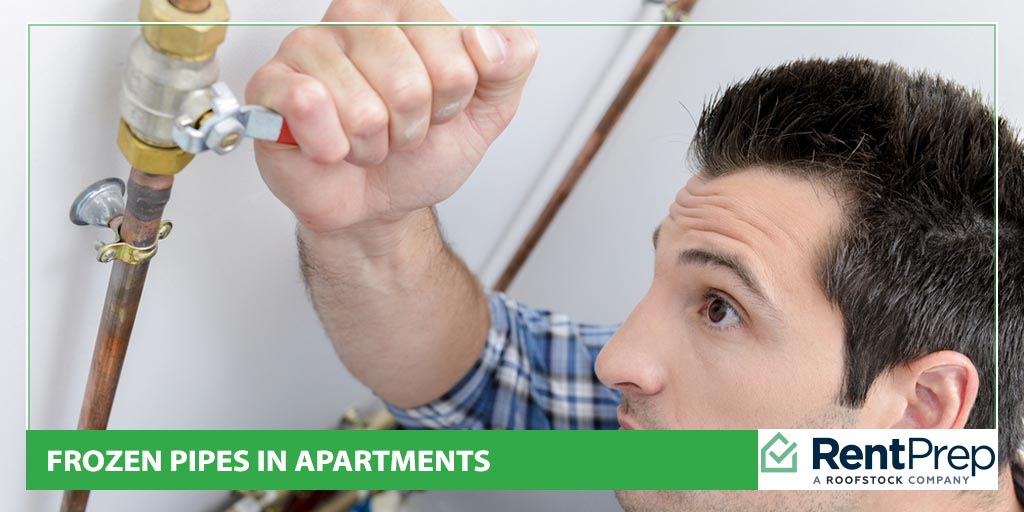
One of the most destructive and costly issues for homes, rental properties and tenant possessions during extremely cold weather is frozen and burst pipes. Being prepared and informing your tenants on how to prevent frozen pipes in apartments and what to do when temperatures plunge can help you avoid the expensive and messy results.
Problems From Frozen Pipes in Apartment
The 3 main factors needed for pipes to freeze are:
- A quick drop in the temperature outside
- Poor insulation
- The thermostat set too low to heat the air in the home
When water freezes inside a pipe, it expands. When there is too much expansion, the internal stress on the pipe can cause it to burst. Whether metal or plastic, pipes that freeze can burst and leak water everywhere.
Pipes that are most susceptible to freezing are ones located nearest the severe cold, like those in unheated areas like a basement, attic, garage, kitchen cabinet or even pipes that run through exterior walls with poor insulation. On a cold day and colder nights, these are the pipes that are most likely to freeze, burst and cause thousands of dollars in damage.
How to Prevent Frozen Pipes
The best way to avoid the mess of burst pipes due to freezing is to take preventative action.
Here are 5 things you can do to your rental property to reduce the risk of frozen pipes.
- Remove and drain outdoor hoses from the outdoor water bib.
- Drain water from the sprinkler supply lines in the fall.
- Identify any pipes that are located in uninsulated or unheated areas of the property and put pipe sleeves (insulated strips that wrap around pipes) on exposed pipes.
- Insulate areas of the property (like the basement or attic) that are currently not—this will not only keep pipes from freezing but will affect the tenant’s heating and cooling bills.
- Keep the thermostat at a steady temperature both day and night.
What to Do When It’s Freezing Outside
While prevention is the best way to ensure pipes won’t freeze, there are certain actions that your tenant can take to further minimize the risk.
Here are 5 things your tenant should do when the temperature drops (keeping in mind the three factors that contribute to frozen pipes—thermostat, insulation and cold weather):
- Open kitchen and bathroom cabinet doors to allow warm air to circulate near the pipes.
- Keep the garage doors closed to provide some protection to any pipes in the garage.
- Allow the thermostat to run at night when temperatures are the coldest.
- Turn a risky faucet on to allow a trickle of cold water through as running water will prevent pipes from freezing.
- Keep the thermostat set at least above 50 degrees F if the tenant will be gone for a time during cold weather.
When the Pipes Actually Do Freeze
Despite all the best efforts, sometimes pipes still freeze.
When that happens, don’t panic. A frozen pipe doesn’t automatically mean it will burst if you act quickly. You can attempt to thaw out the pipes yourself or call a professional plumber.
What are some of the property issues this recent deep freeze has caused for you?
Please share the article and let us know what happened and how you handled it in the comments below.

